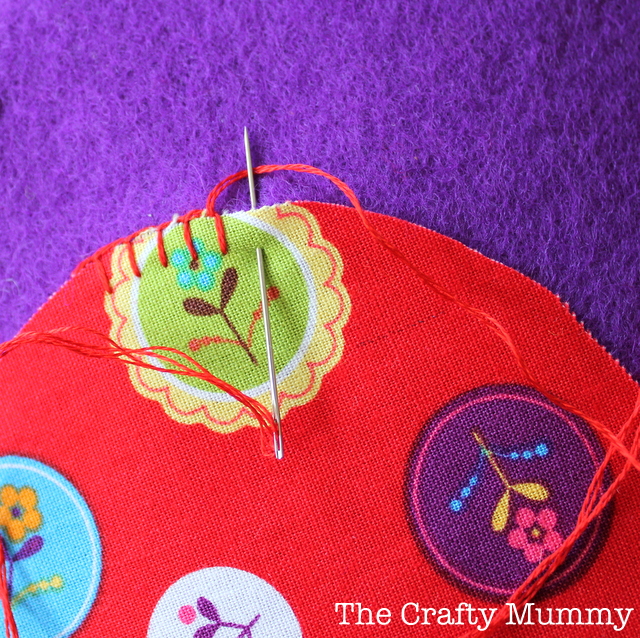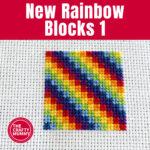Learn how to blanket stitch an applique with this tutorial – instructions and photos to help you.

Tomorrow I have a very cute project to share on the blog as part of the Make a Plushka Toy Blog Tour. As I was making my toy I decided to create a tutorial that I’ve been planning to write for a while now. I wanted to show you how to blanket stitch an applique. You could use this to add applique to anything – a quilt, T-shirt, bag, anything! So although Plushka’s instructions said to use running stitch for the applique on the toy, I did some of it in blanket stitch just to show you how.
Preparation
Place your applique pieces onto the other fabric and pin them in place. If you want them to hold even more firmly in place, you could use Vilene Vliesofix or Bondaweb to iron them on, or spray adhesive. Vliesofix is a double-sided adhesive product that you iron on to fabric. You will also need needle and thread ready to stitch.

Step 1: Bring your needle and thread up from underneath your fabric in the spot you want to start stitching – in this case, I just picked a spot on my circle to start. You need to be right next to your applique piece but don’t stitch through the applique piece.

Step 2: Stitch into your applique piece about 2mm from the edge of the applique and a similar distance to the right of your starting point.
Step 3: Bring the needle back up near the edge of the applique but to the right of your starting point. Make sure that the thread is looped behind the needle as in the picture.

Step 4: Pull the needle through carefully ensuring that the loop is falling behind the stitch.

Step 5: Pull the thread so that the stitch sits flat but not so tight that it puckers. The “top” of the stitch should run along the edge of your applique piece.

Tips
- Try to keep the distance between stitches and the length in from the edge of the applique the same for an even look.
- As you go around a curve like this circle, the points where your needle goes down on the applique piece need to be slightly closer together than the points where your needle comes up at the edge of the applique. This allows for the curved shape.
- A curve going the other way would have the outer points closer together than the inner stitches.
- At a sharp corner, you can stitch three stitches into the same inner point to turn the corner.
- If you want your stitching to be a feature, use a contrasting thread instead of a matching thread.












Thank you so much for your tutorial I am off to have a go 🙂
I’d love to see a picture of your project when you’re done, Sue
My year 4 students very much appreciated your photos to help us applique tea-towels for mother’s day last week 🙂 10 year old blanket stitch is nowhere near as neat as yours, but they did an awesome job!
Oh I’m so glad it was helpful to your class, Rachael! I bet there were some very excited mums getting handmade gifts!!
i am just learning how to sew. I have done a few small projects. I am fixing to start a table runner that has a lot of applique on it. I saw a website with an applique needle. I do not know what the difference is between that and a regular needle. I want to do the blanket stitch. Thanks.
Does the edge raw edge of your material that is xposed need to be stitched or turned under to,prevent fraying?
Thanks for taking the time to post a really clear explanation of this technique – I’ve seen photos of people using blanket stitch to appliqué on crocheted fabric and wanted to have a go.